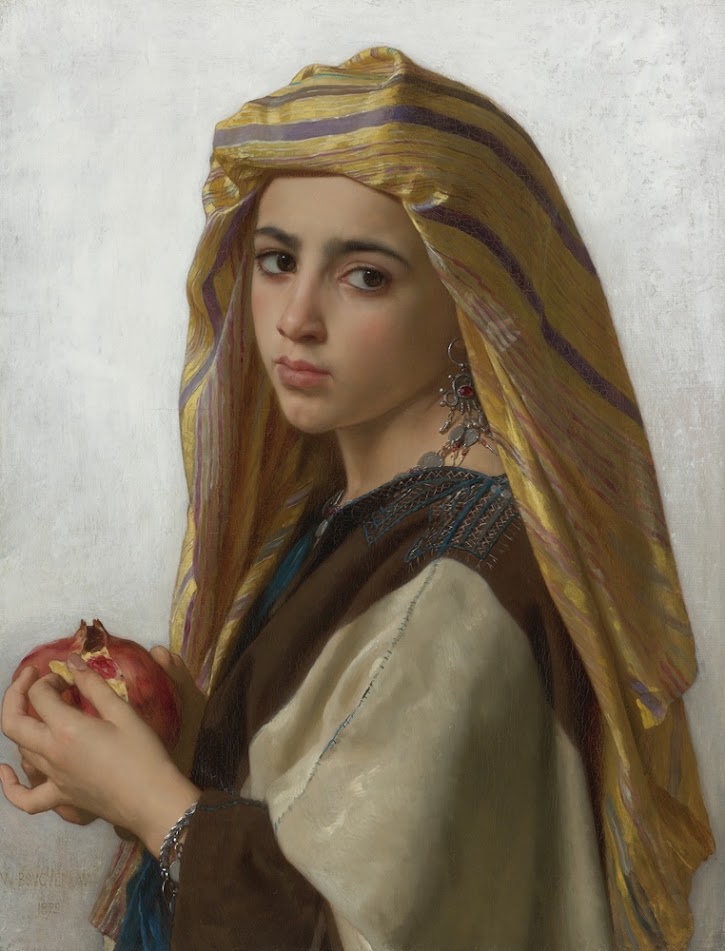William-Adolphe Bouguereau, (1825 - 1905)
Marchande de grenades (Pomegranate Seller)
In the distance is the Bab Zuwayla, Cairo, Egypt
Oil on canvas
45 1/2 x 35 1/8 inches
Private collection
Bab Zuweila is one of three remaining gates in the city wall of the Old City of Cairo, the capital of Egypt. It was also known as Bawabbat al-Mitwali during the Ottoman period. It is considered one of the major landmarks of the city and is the last remaining southern gate from the walls of Fatimid-era Cairo in the 11th and 12th century.
Its name comes from Bab, meaning "gate", and Zuwayla, as it was the Western Gate of the city that had a trade route for overland travelers with Zuwayla in the Fezzan.
More on Bab Zuweila
William-Adolphe Bouguereau (1825–1905)
Girl with a Pomegranate, c. 1875
Oil on canvas
height: 59.6 cm (23.4 in); width: 45.7 cm (17.9 in)
Private collection
Sold for 2,322,500 USD in May 2012
William-Adolphe Bouguereau (30 November 1825 – 19 August 1905) was a French academic painter. In his realistic genre paintings he used mythological themes, making modern interpretations of classical subjects, with an emphasis on the female human body. During his life he enjoyed significant popularity in France and the United States, was given numerous official honors, and received top prices for his work. As the quintessential salon painter of his generation, he was reviled by the Impressionist avant-garde. By the early twentieth century, Bouguereau and his art fell out of favor with the public, due in part to changing tastes. In the 1980s, a revival of interest in figure painting led to a rediscovery of Bouguereau and his work. Throughout the course of his life, Bouguereau executed 822 known finished paintings, although the whereabouts of many are still unknown. More on William-Adolphe Bouguereau
Please visit my other blogs: Art
Collector, Mythology, Marine
Art, Portrait of a Lady, The
Orientalist, Art of the Nude and The
Canals of Venice, Middle
East Artists, 365
Saints and 365 Days, also visit my Boards on Pinterest
Images are copyright of their respective owners, assignees or others.
Some Images may be subject to copyright
I don't own any of these images - credit is always given when due unless
it is unknown to me. if I post your images without your permission, please tell
me.
I do not sell art, art prints, framed posters or reproductions. Ads are
shown only to compensate the hosting expenses.
If you enjoyed this post, please share with friends and family.
Thank you for visiting my blog and also for liking its posts and pages.
Please note that the content of this post primarily consists of articles
available from Wikipedia or other free sources online.


